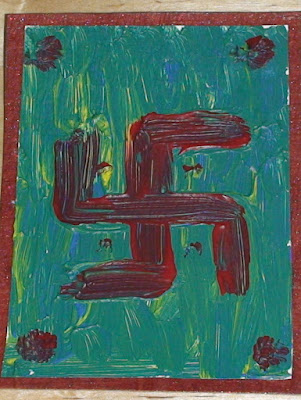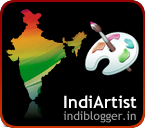This is my second series of ATCs..
I have taken few symbols in indian culture and tried to paint them in abstract style. I used acrylic colurs with hard flat brush to give the strokes to get the desired look for surface.
1. Diya
Diya is a small earthen lamp that is lit especially at Diwali. They are usually made of clay. Ghee or oil is used as the fuel and cotton wool as the wick. Sometimes they are made by part filling a glass with colored water, Ghee is floated on top, and again cotton wool used as a wick. It is a tradition in India to light diya every evening in the house as it is considered holy and auspicious.
2. Swastika.
3. Aum / Om.
Aum (written in Devanagari as ॐ), is a mystical or sacred syllable in the Indian religions, including Hinduism, Sikhism, Jainism, and Buddhism.
It is pronounced as a long or over-long nasalized close-mid back rounded vowel . It is placed at the beginning of most Hindu texts as a sacred exclamation to be uttered at the beginning and end of a reading of the Vedas or previously to any prayer or mantra. The Mandukya Upanishad is entirely devoted to the explanation of the syllable. The syllable is taken to consist of three phonemes, a, u and m, variously symbolizing the Three Vedas or the Hindu Trimurti.
In Puranic Hinduism, Aum is the mystic name for the Hindu Trimurti, and represents the union of the three gods, viz. a for Brahma, u for Vishnu and m for Mahadev which is another name of Shiva. The three sounds also symbolize the three Vedas (Rigveda, Samaveda, Yajurveda).
(informations source : http://en.wikipedia.org/wiki/Aum)
















